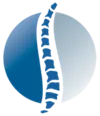Windows and Mac users actually do have one thing in common - computer ergonomics issues, namely, pain.1,2 Beyond the usual hardware and software gotchas we deal with on a daily basis, the real bottom-line question is, "how to play nice with my computer".
Doing computer work is a funny kind of work, a type of activity we're still getting used to. It's not physical work in the sense that there's no heavy lifting going on, no truck-driving, no emergency services heart-pounding decision-making.
But computer work is still an intensely physical activity, although the work is pretty subtle. In computer work it's the small muscles that are getting the workout, not the big muscles we're used to thinking about.
Wrist muscles, tendons, and ligaments. Finger muscles, tendons, and ligaments. Shoulder muscles, Neck muscles. All of these are involved in ongoing repetitive tasks when you sit at a computer and one hour turns into two, two hours turns into three, and suddenly half the day is gone and you notice you've got a killer stiff neck.
Or, one day the tendons on the back of your hand begin to hurt, feeling irritated and inflamed. Or your shoulders and upper back are tight and painful.
Your hands or shoulders feel better by the time you go to sleep. But the next day, as soon as you start to type they act up again.
This is all very uncomfortable, because you've got to do your work.
What's going on?
These various pain patterns in your hands, wrists, shoulders, and neck can be grouped together as a repetitive stress syndrome. Repetitive activities, done over a long period of time, can irritate and inflame the muscles, tendons, and ligaments that are involved in doing the work.
But computer work involves repetitive tasks. How can you avoid these painful problems?
The best approach is to prevent them in the first place.3 If such a syndrome does develop, relative rest is indicated. Reduced computer activity, in smaller intervals, is a good solution. A very useful work-around for right- or left-arm pain is to teach your non-dominant hand to use the mouse or touchpad. This training may take a few weeks - the valuable result is the ability to switch hands whenever you like, distributing the workload between the two sides. Much better.
The most important aspect of prevention is to take a quick, refreshing break once an hour. This is a critical habit to develop. Get out of your chair, walk around, get some fresh air if possible. Change your environment for a few minutes - talk to a co-worker for a moment, get a drink from the water-cooler down the hall, seek out a picture, wall-covering, or landscape you've never seen before.
These activities refresh your body AND your brain, and you're ready to do another hour of productive, creative, healthy work. You'll feel much better, you'll be avoiding repetitive injuries, and your workday will be more enjoyable.
1Keyserling WM, Chaffin DB: Occupational ergonomics - methods to evaluate physical stress on the job. Annu Rev Public Health 7:77-104, 1986.
2Computer Workstation Ergonomics. Centers for Disease Control and Prevention, 2000. http://www.cdc.gov/od/ohs/Ergonomics/compergo.htm
3Robertson MM, et al: Effects of a participatory ergonomics intervention computer workshop for university students. Work 18(3):305-314, 2002.
